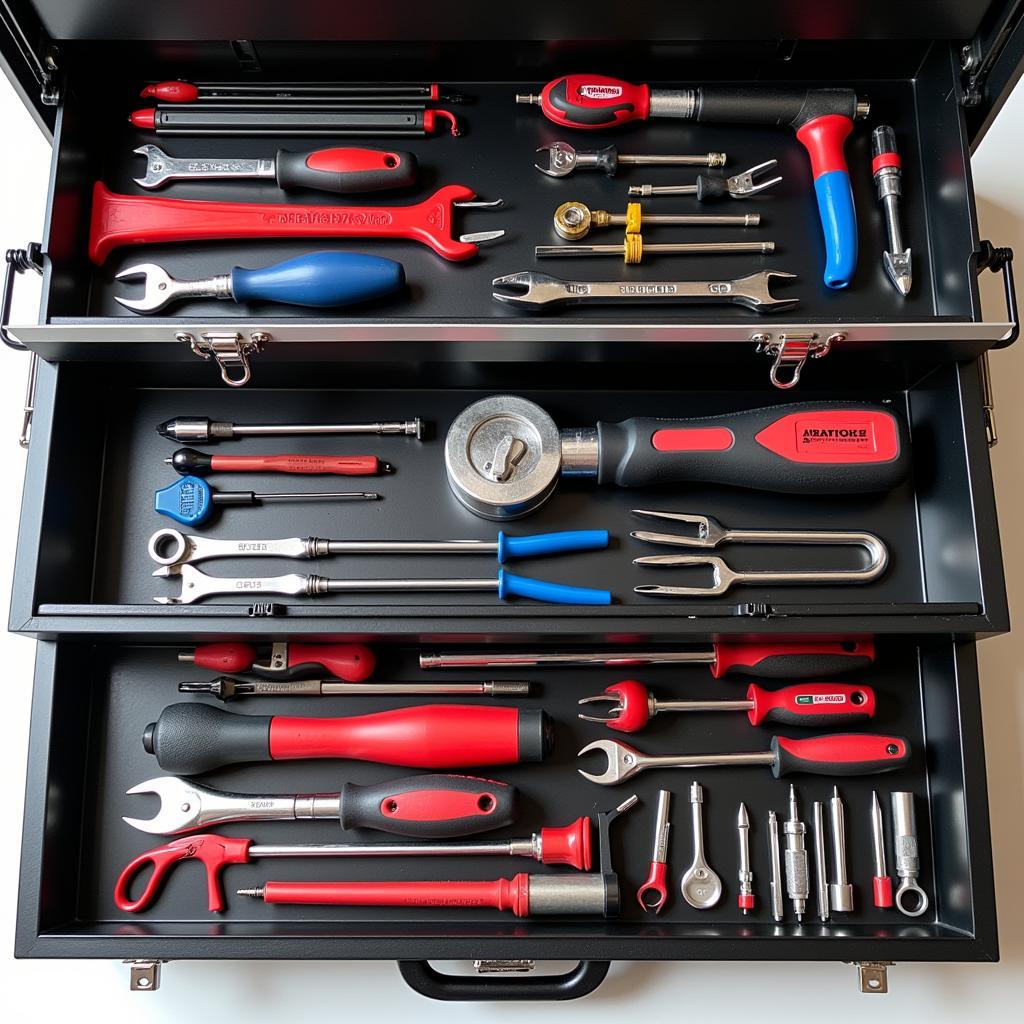Taking care of your tools, whether they’re diagnostic tools for your car or wrenches in your garage, is crucial for their longevity and effectiveness. Proper maintenance not only saves you money in the long run but also ensures accurate readings and reliable performance. This guide will delve into the essential steps for maintaining your tools, covering everything from cleaning to storage.
Why is Tool Maintenance Important?
Regular tool maintenance is the key to ensuring your equipment performs at its best and lasts for years to come. Neglecting your tools can lead to corrosion, damage, and inaccurate readings, especially crucial for car diagnostic tools. Imagine trying to diagnose a complex engine problem with a faulty scanner – the frustration and potential misdiagnosis could be costly. Preventative maintenance, however, can save you time, money, and headaches down the line.
Cleaning Your Diagnostic Tools
Cleaning your car diagnostic tools is the first step in proper maintenance. Dust, grime, and oil can interfere with the sensitive electronics and connections. Use a soft, dry cloth to wipe down the exterior of your scanners and code readers regularly. For more stubborn dirt, a slightly damp cloth with a mild cleaning solution can be used, ensuring the device is completely dry before storage. Avoid using harsh chemicals or abrasive materials that could damage the casing or internal components.
Protecting Your Tools from the Elements
Environmental factors like extreme temperatures and humidity can significantly impact the lifespan of your tools. Store your diagnostic equipment in a cool, dry place away from direct sunlight. A dedicated toolbox or storage case is ideal for protecting your investment from dust, moisture, and accidental damage. For hand tools, a well-organized toolbox or pegboard system not only keeps them protected but also makes them easily accessible. take care of your garden tools can provide additional insights on protecting tools from environmental factors.
Calibration and Updates for Diagnostic Tools
Just like any other precision instrument, car diagnostic tools require regular calibration to maintain accuracy. Consult the manufacturer’s instructions for specific calibration procedures, which may involve using specialized software or equipment. Additionally, ensure your diagnostic software is up-to-date to access the latest features and vehicle compatibility. Regularly check for updates and install them promptly to optimize performance.
 Calibrating a Car Diagnostic Tool with Software
Calibrating a Car Diagnostic Tool with Software
Proper Storage for Long-Term Care
When not in use, store your tools in a designated area to prevent damage and loss. For diagnostic tools, a protective case is essential to safeguard them from impacts and environmental factors. Hand tools should be organized in a toolbox or on a pegboard to prevent rust and corrosion. Proper storage also ensures you can quickly locate the tool you need when you need it. lyrics you take good care of your tools can also offer valuable tips for tool organization.
Inspecting Your Tools Regularly
Regular inspection is crucial for catching potential problems early on. Check your tools for signs of wear and tear, such as cracks, frayed wires, or loose connections. Address these issues promptly to prevent further damage and ensure safe operation. For hand tools, sharpen blades, lubricate moving parts, and tighten loose handles as needed. how to take care of your hand tools offers a detailed guide on maintaining various types of hand tools.
How to Organize Your Tools
A well-organized toolbox is a mechanic’s best friend. Invest in a high-quality toolbox with compartments and drawers to keep your tools separated and easily accessible. Label each compartment or drawer to quickly identify the tools you need. This not only saves time but also prevents tools from rubbing against each other, reducing wear and tear. take care your tools emphasizes the importance of proper tool organization.
 Organized Toolbox with Labeled Compartments
Organized Toolbox with Labeled Compartments
Conclusion
Taking care of your tools is a fundamental practice for any professional or DIY enthusiast. From diagnostic equipment to everyday hand tools, proper maintenance ensures longevity, accuracy, and reliable performance. By following these simple steps, you can extend the life of your tools, saving yourself money and frustration in the long run. Remember, regular cleaning, proper storage, and timely repairs are essential for keeping your tools in top condition and ensuring they’re ready when you need them. How To Take Care Of Your Tools should be a primary concern for anyone who relies on them. how to take care of your hot tools can offer additional information.
FAQ:
- How often should I clean my diagnostic tools? Ideally, after each use or at least weekly.
- What should I use to clean my diagnostic tools? A soft, dry cloth, and a slightly damp cloth with mild cleaning solution for stubborn dirt.
- Where should I store my diagnostic tools? In a cool, dry place away from direct sunlight.
- Why is calibration important for diagnostic tools? Calibration ensures accurate readings and reliable performance.
- How can I protect my tools from rust and corrosion? Store them in a dry place and apply a light coat of oil to metal surfaces.
- What should I do if my tool is damaged? Repair it promptly or replace it if necessary.
- How often should I inspect my tools? Regularly, preferably before and after each use.
Contact us for support:
WhatsApp: +1(641)206-8880
Email: [email protected]
Address: 910 Cedar Lane, Chicago, IL 60605, USA
We have a 24/7 customer support team.

Leave a Reply